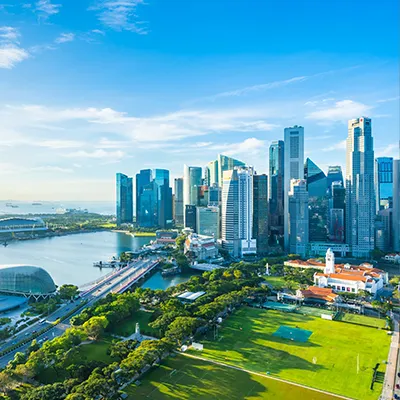SINGAPORE achieved its 2020 solar deployment target of 350 megawatt-peak (MWp) in the first quarter of this year, the Energy Market Authority (EMA) and JTC said in a joint statement on Wednesday.
This comes as the government and industry move to cleaner energy in light of worsening climate change.
EMA chief executive Ngiam Shih Chun said Singapore will step up its adoption of solar energy, given that it is the country's most viable source of renewable energy.
The 350 MWp target for 2020 was set in 2010, and is equivalent to powering 60,000 households for a year.
The Republic crossed this mark upon the completion of a 6 MWp rooftop solar installation at a CapitaLand industrial property at 40 Penjuru Lane, held under Ascendas Real Estate Investment Trust.
These solar panels were installed and are operated by Sembcorp Industries, enabling the industrial facility to reduce its carbon footprint; excess electricity generated there is sold on the wholesale electricity market.
With the 2020 target now met, Singapore is setting its sights on the next target of at least 2 gigawatt-peak of solar deployment by 2030. This is equivalent to powering about 350,000 households a year.
JTC will roll out extensions for two of its solar initiatives, SolarLand and SolarRoof, which generate clean energy to the national grid via the installation of solar panels on plots of vacant land and on the rooftops of JTC's buildings respectively. The programmes' next phases will seek to use over 740,000 sq m of industrial land and roof space - equivalent to about 103 soccer fields - for solar installations. This is estimated to contribute over 82 MWp of solar-energy capacity to the 2030 national goal, and generate about 78,000 MWh to power more than 14,600 households and reduce over 32,000 tonnes of carbon emissions per year.
The SolarLand and SolarRoof programmes will help to overcome some challenges faced by Singapore's solar market, such as limited space and high capital costs, said Calvin Chung, JTC's group director of engineering.
The agency will issue a tender in the first half of 2020 for the second phase of SolarRoof, to create an additional 15 MWp of solar capacity.
Aside from JTC's industrial buildings, the agency is also looking into allowing lessees to install solar panels on their own rooftops.
Meanwhile, in a separate statement on Wednesday, Singtel announced the completion of a 1.65 MWp solar-energy installation on the rooftop of its Bedok Data Centre, its largest generator of clean energy to date.
It comprises 4,292 solar panels spanning about 8,205 sq m.
The installation began operations in March, and will generate enough clean energy to fulfil 10 per cent of the data centre's energy needs, Singtel said.
The telco aims to achieve net-zero emissions by 2050.
To meet this target, it is exploring the use of direct renewable energy for its infrastructure and larger-scale projects in Singapore and Australia; it has been investing in energy-efficient technologies to lower energy consumption at its operations.
Singtel's vice-president of group sustainability, Andrew Buay, said the company's green initiatives "are increasingly important to customers, particularly enterprises that outsource their ICT (information and communications technology) operations to us and want to reduce their own carbon footprint too".
© 2020 Singapore Press Holdings
This article was written by Rachel Chia from The Singapore Business Times and was legally licensed through the NewsCred publisher network. Please direct all licensing questions to legal@newscred.com.






